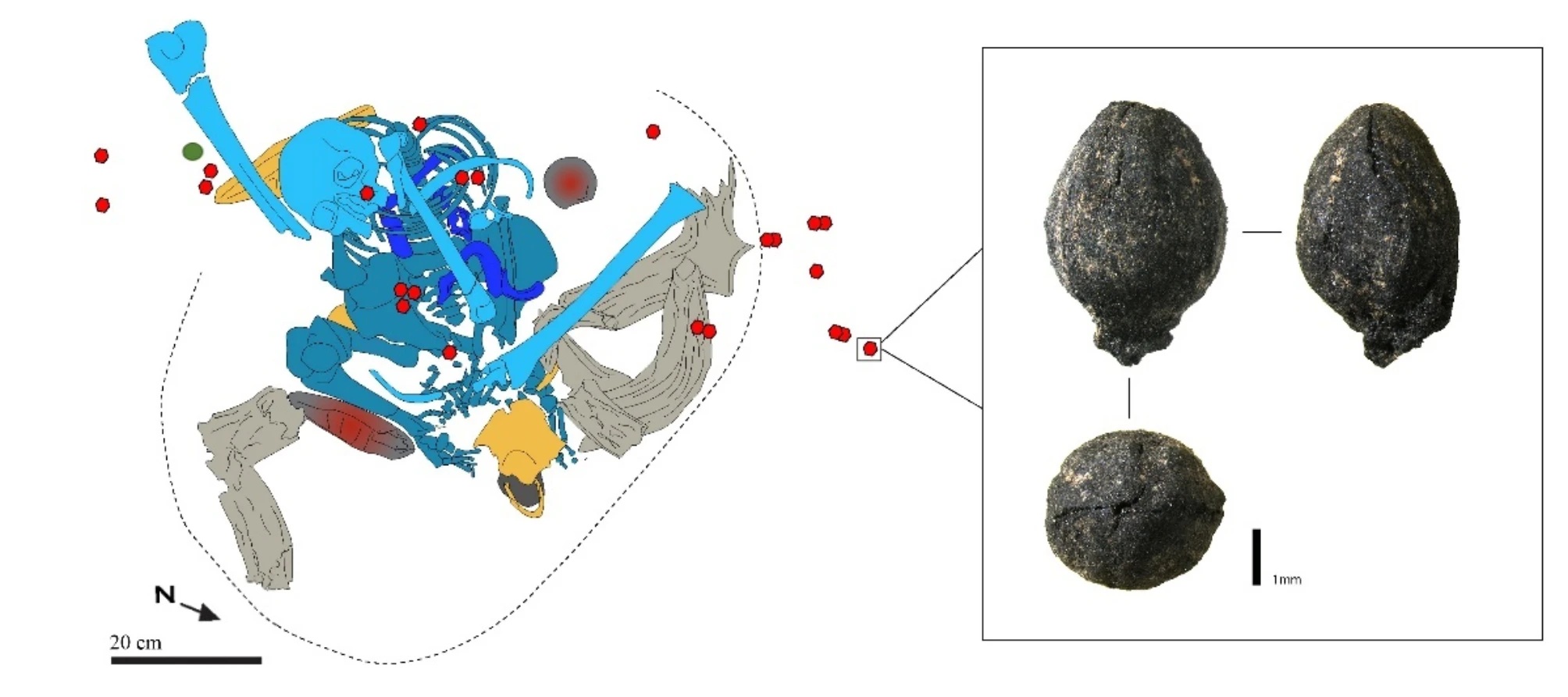At this cave in North Africa some 15,000 years ago, a human was buried alongside an “unusual and special” medicinal plant: Ephedra, a humble shrub that’s still used today in some traditional medicines. It’s the earliest known evidence of humans using this plant, and it holds the potential to cast light on the mysteries of funerary practices and prehistoric medicine.
The discovery was made in La Grotte des Pigeons (The Cave of Pigeons), known locally as Taforalt, near the city of Berkane in northeastern Morroco. Between 2005 and 2015, archaeologists discovered the skeletons of several adults and infants placed in a seated or reclining position right at the back of the cave.
One of the skeletons, an adult male aged 19 to 20 years old named Individual 14, was found to be buried alongside a wealth of rare and special goods, including animal bones, stones, and ochre-colored objects.
Among his bones and burial goods, researchers led by a team at the University of Las Palmas de Gran Canaria have recently identified hundreds of charred remains belonging to seven different plant species.
Most interesting of all was the discovery of Ephedra, a well-known medicinal plant that’s been used in the traditional medicines of India and China for thousands of years.

Illustration of Individual 14 (in blue) along with his Barbary sheep horn core (in grey), stone with ochre (in dark grey and red), animal bones (in yellow), and Ephedra plant bits (as red spots).
The plant has many purported health benefits – many of which have not been scientifically proven – such as treating colds and respiratory illnesses. It’s also touted for its ability to boost energy and aid weight loss.
One of its main active ingredients is ephedrine, a stimulant that’s often used to prevent low blood pressure during anesthesia, as well to treat as asthma, narcolepsy, and obesity.
Given the wide range of potential uses, the researchers behind this latest discovery in Morocco aren’t totally certain why the man was buried with charred remains of the plant, although they have some ideas.
“Ephedra may have been a ‘medicinal food’ that was consumed for both its nutritional and therapeutic properties, and it could have been exploited to provide several benefits simultaneously such as to mitigate hunger and maintain health,” the study authors write.
“Evidence of successful recovery from operations, such as tooth evulsion and cranial trephination, performed by Iberomaurusian occupants of Grotte des Pigeons suggests that Ephedra could have been used for medicinal purposes. Ephedra is a vasoconstrictor, and it could have been employed to reduce the amount of blood loss during these surgical procedures and as an aid to recovery,” they added.
The researchers acknowledge that we can never totally understand the intentions of people who lived 15,000 years ago. However, they emphasize that it is clear this “unusual and special” plant was consumed in a funerary context, suggesting they understood its significance and strange properties.
“The consumption of special foods and the placement of food debris in highly symbolic contexts, such as burial places, have been interpreted in other archaeological contexts as clear evidence of feasting, and potential sharing of food items with the deceased. Here we suggest that at Grotte des Pigeons, people were using or consuming unusual and special foods as part of a [15,000-year-old] human burial and that Ephedra had a significant place among them,” conclude the researchers.
The study is published in the journal Scientific Reports.
Source Link: A Cave In North Africa Holds 15,000-Year-Old Evidence Of Drug Use